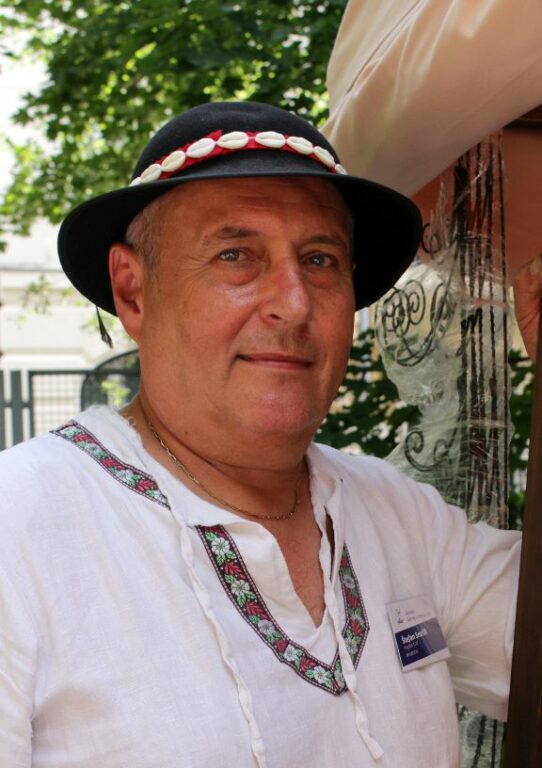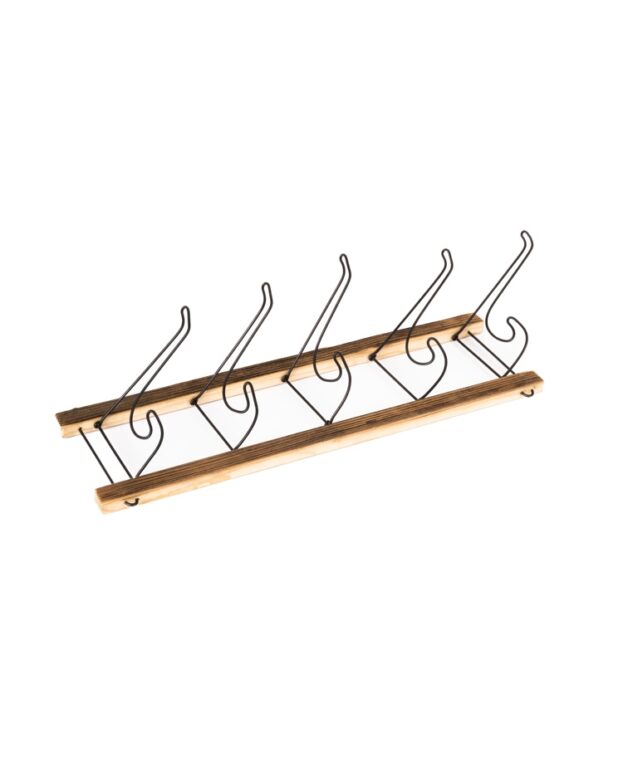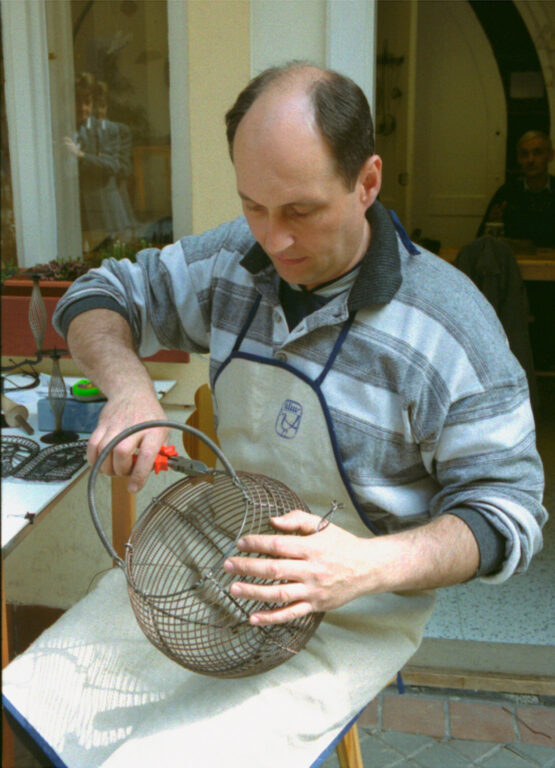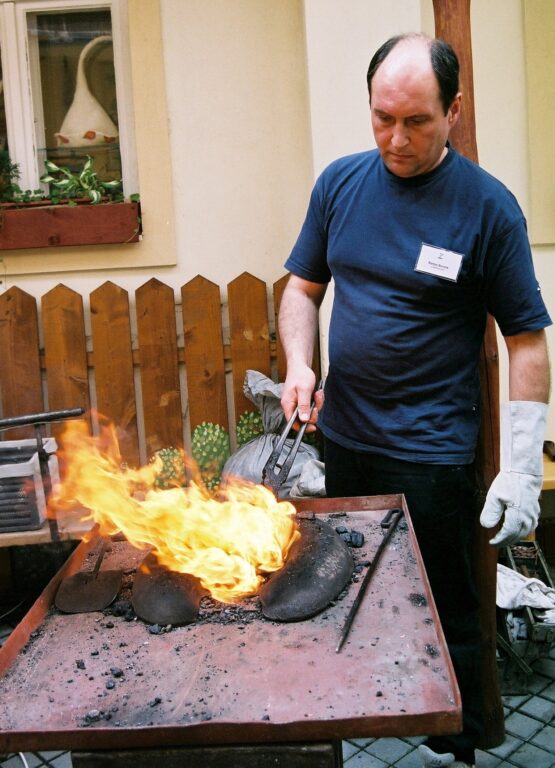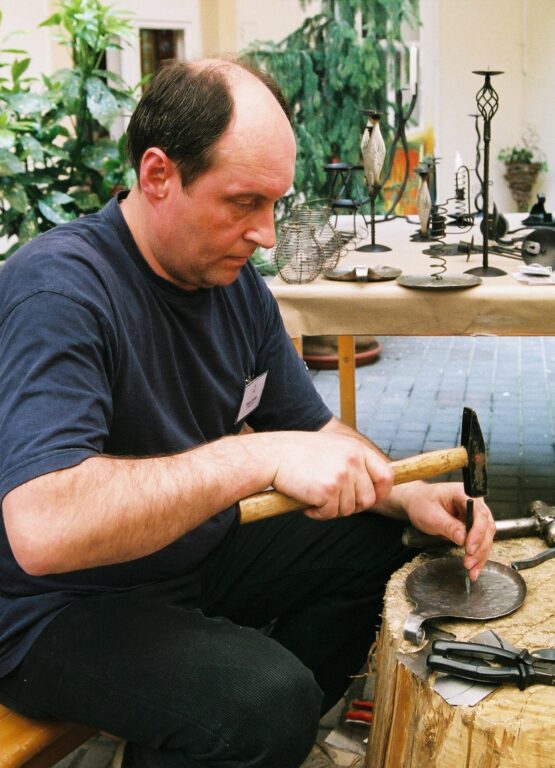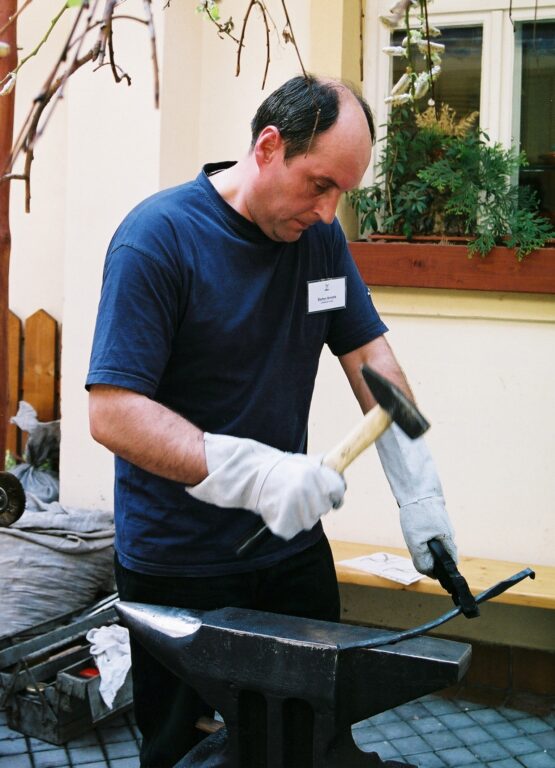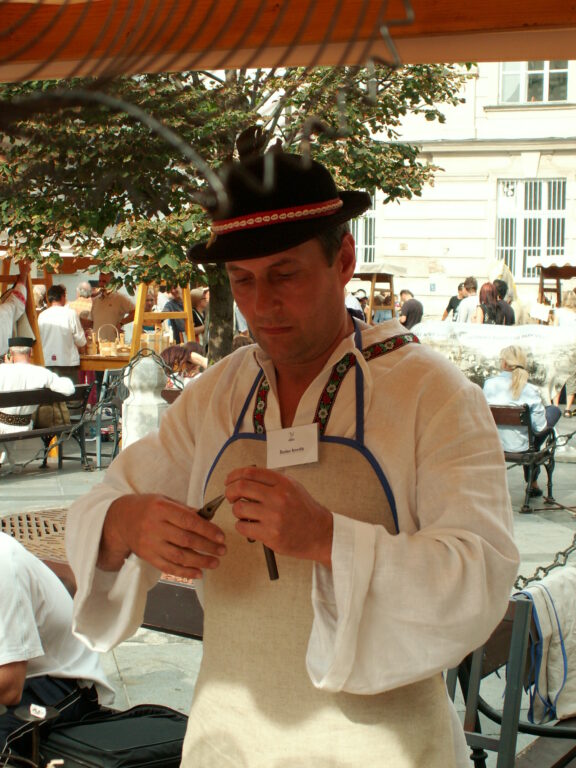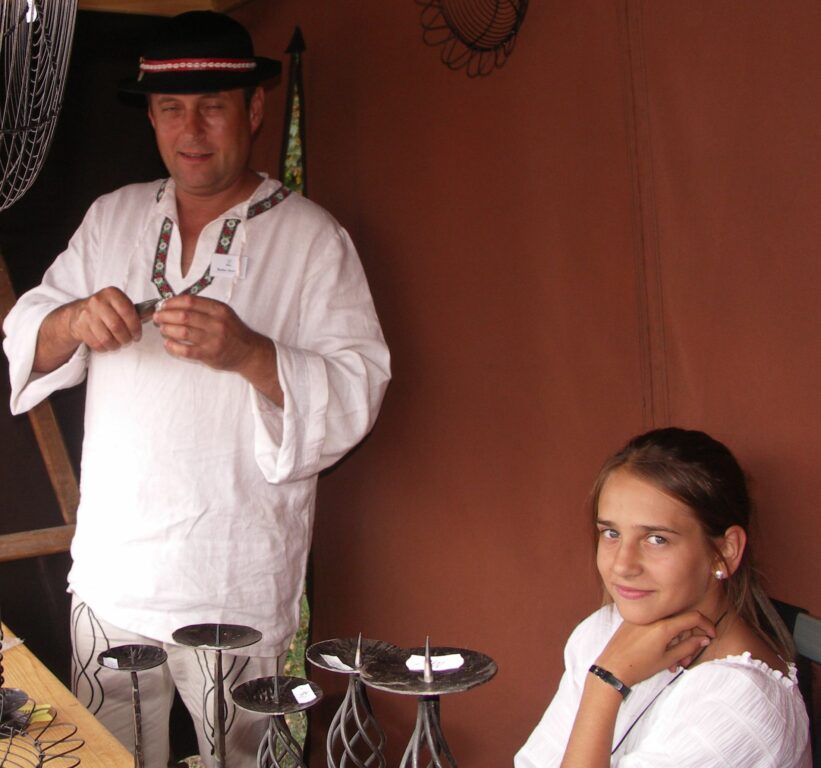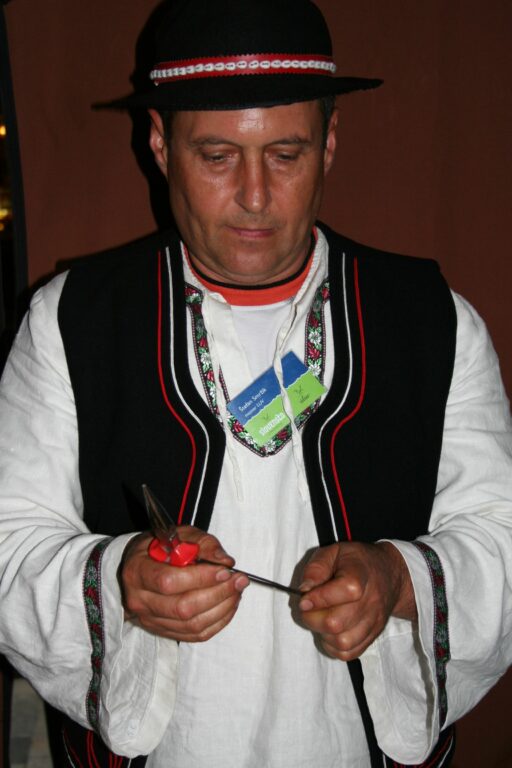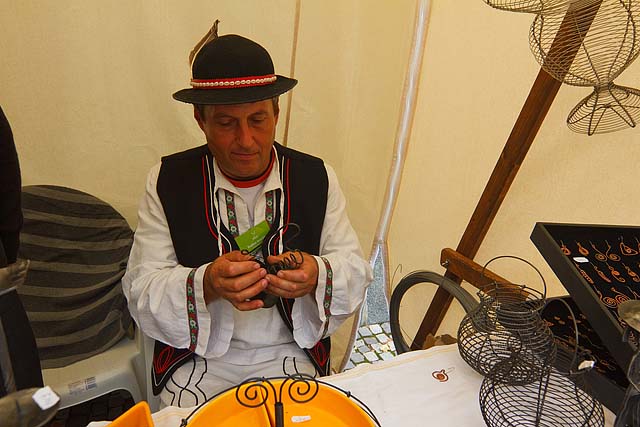Trained as a mechanical locksmith, he followed the tradition of two distinct crafts - blacksmithing and wireworking, and with his artistic and craft activities achieved an atypical fusion of both production techniques. His work with wire was inspired by his brother Ľubomír, but he is self-taught in both craft disciplines. He has been actively involved in production since 1998. His...
Trained as a mechanical locksmith, he followed the tradition of two distinct crafts – blacksmithing and wireworking, and with his artistic and craft activities achieved an atypical fusion of both production techniques. His work with wire was inspired by his brother Ľubomír, but he is self-taught in both craft disciplines. He has been actively involved in production since 1998. His creations include classic products made of wrought iron (sets of fireplace tools, candleholders, decorative shelves for storing small items) as well as a rich assortment of utility-decorative artifacts made of wire, ranging from traditional wire items (hangers, baskets, trays, pot and iron stands, bird cages) to often multi-purpose products with original designs, uncommon for wirework (candleholders combined with serving bowls, lamps, small dining accessories – decorative stands for napkins and place cards, skewers for roasting meat, etc.). All products are based on original folk patterns in terms of shape and weaves. They are characterized by rational shapes, clean lines, balanced use of decorative elements, and perfect technological processing. His craft signature is a combination of wire with wrought iron or sheet metal, utilizing a visual contrast of both materials. He also experiments in the field of free creation, producing wall reliefs and flat decorative pictures with sacred themes, as well as demanding figurative sculptures of an insistent nature, drawing inspiration from nature. All products are processed by hand. For wrought items, he produces them by forging and bending iron rods under heat, while working with wire, he uses traditional cold shaping, tying, and weaving techniques without using welded or soldered joints, only with the help of pliers, hammers, and simple tools. He works with various types of wire, such as galvanized or anticorrosive, but most commonly chooses steel, which he surface treats by blackening and preserving with beeswax. He has been exhibiting since 2000, both independently and with his brother Ľubomír. He has also participated in representative exhibitions Transformations of Wire at the Považie Museum in Žilina (2001, 2004). He made wire accessories for the Slovak pavilion at the World Expo 2000 in Hanover. He regularly participates in Meetings of Wire Masters at the Považie Museum in Žilina, at folklore festivals, displays of folk and historical crafts, and at presentations of folk culture at home and abroad (France, the Netherlands, Poland). In 2002, together with his brother Ľubomír, he won first place at the VI. Art Festival Zabavy, zabavek, widows, and on the traveling exhibition of the children’s toy Fantastic Flora and Fauna in Polish cities Bialsko Biala and Kielce. His works can be found in the collections of the Považie Museum in Žilina. He actively collaborates with the Craft and Art Association of Slovakia in Bratislava. In 2008, he obtained a certificate for the recognition of qualification as a master of folk artistic production in the field of wire and metal production, awarded by the Commission for Assessing the Professional Qualifications of Workers in Folk Art Production.
